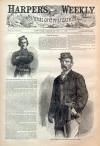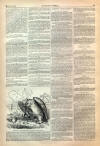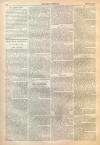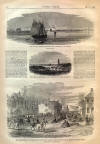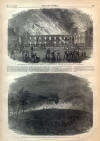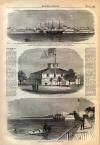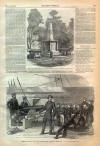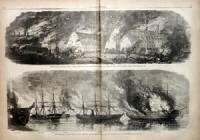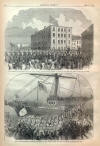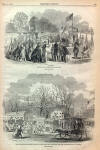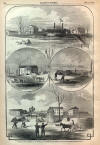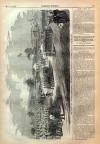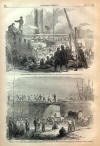Colonel Ellsworth and the Fire Zouaves
|
|
This Site:
|
VOL. V.—No. 228.] NEW YORK, SATURDAY, MAY 11, 1861. SINGLE COPIES SIX CENTS. $2 50 PER YEAR IN ADVANCE. Entered according to Act of Congress, in the Year 1861, by Harper & Brothers, in the Clerk's Office of the District Court for the Southern District of New York, WE publish above, from a recent photograph, a portrait of COLONEL. ELLSWORTH, the commander of the Fire Zouaves of this city. Colonel Ellsworth's face and gallant bearing are well known to most of our citizens, and they will be glad to meet him once more in our pages. The Colonel is quite a young man, being only about twenty-seven years of age. He is a native of New England, and studied for a time at West Point, acquiring the usual proficiency in the manual of military exercise and the use of arms. Some years ago he removed to Chicago, Illinois, and settled there. His love for military pursuits still endured, and conceiving—shortly after the Crimean war—a decided opinion that the Zouave tactics were more practically efficient than those of our ordinary light infantry, he set to work to raise a corps of Zouaves in Chicago. Some forty or fifty young men joined his company, and he devoted himself to drilling them. In the course of a year or so, they arrived at such a pitch of perfection both in the light infantry drill and in the Zouave tactics, that many of their friends were anxious that they should visit the East to show what Chicago could do. Accordingly, in July, 1860, they left Chicago on a pleasure tour. On 14th July they arrived in this city, after a triumphant progress through the Western States. At that time the Zouave drill was new to most of us. The fantastic dress of our visitors, their strange evolutions, and the masterly precision of their drill, attracted general attention not only among military mien, but among the public at large. All the Colonels of our crack city regiments attended their exhibitions, and studied Colonel Ellsworth's maneuvers, and at last, so great was the desire of our ladies to witness the Chicago boys, that an exhibition was given for them in the Academy of Music which was crammed by the elite of society. Colonel Ellsworth may safely be described as the Father of the Zouave drill in the United States. At the present time, there are several thousand well-drilled Zouaves in the North and West. On his return home, the young Colonel was of course much feted by his Fellow-citizens, and new Zouave Companies were formed on the model of his. Among other persons who paid him marked attention was Mr. Lincoln, then merely a candidate for the Presidency. After the election Mr. Lincoln signaled his intention of attaching Colonel Ellsworth to his person ; and when, in February last, he departed on his journey to Washington, Colonel Ellsworth was invited to form one of his escort. He was, the reporters tell us, one of the most useful of the party, ever watchful of Mr. Lincoln's person, and always in good temper and ready for any thing that could render the journey pleasant. It was generally supposed that Colonel Ellsworth would be placed in a prominent position in the War Department under Mr. Lincoln. It is understood that his claims were urged by General Sumner, and that some post—perhaps the Chief Clerkship—was mentioned in connection with his name. It is not likely, however, that he sought any such inglorious berth. On the outbreak of the war he sought active service. And having had an opportunity of judging what excellent material for soldiers was contained in the New York Fire Department, he bethought himself of forming out of them a Zouave Regiment. The idea was a happy one. Our firemen, brave as steel, would be restive under the stiff restraints of light infantry tactics, whereas the comparative freedom and dash of the Zouave drill suit them exactly. In the course of a couple of days over a thousand firemen volunteered. Some ten companies were accepted, the regiment was formed, and sent to Fort Hammilton for drill. They have since left for Washington, and, whatever happens, will doubtless give a good account of themselves, COLONEL ELLSWORTH, OF THE FIRE ZOUAVES.COLONEL WILSON.COLONEL WILLIAM WILSON, of the " Wilson Zouaves," whose portrait we give on this page, is a well-known character in New York. He has long been famous as a leader of the Mozart Democracy, having joined Fernando Wood in his famous bolt from Tammany Hall. A doughty chief of the "roughs," Mr. Wilson has figured prominently in almost every melee of our turbulent city Democracy, and is justly feared even by the strongest and boldest of the "b'hoys." In his youth he was a prize-fighter, and made a name for himself in the ring. A few years since he became Alderman of the First Ward, and was an active member of the Board. Since his retirement from the City Council he has not filled any public station. When the city of New York was thrilled by the news that Baltimore refused passage to Northern troops marching to the defense of Washington, and had even attacked and driven back a body of unarmed Pennsylvanians, Colonel Wilson instantly announced that he would form a corps of " roughs" to march through Baltimore. All the "b'hoys" flocked to his standard, and in two or three clays nearly two thousand men offered their services. They were offered no holiday work. "Boys !" said Wilson, to a party of thirty young men who volunteered, "you want to come with me, eh! Well, if you do, three-fourths of you will be in your graves in three weeks !" "Bravo! good ! good!" was the unanimous reply. "'We'll go with you !" They are all of this stamp. Colonel Wilson and his men are encamped on Stanton Island; preparing for their march through Baltimore. COLONEL WILSON, OF WILSON'S BRIGADE—[ PHOTOGRAPHED BY MATHEW BRADY ] 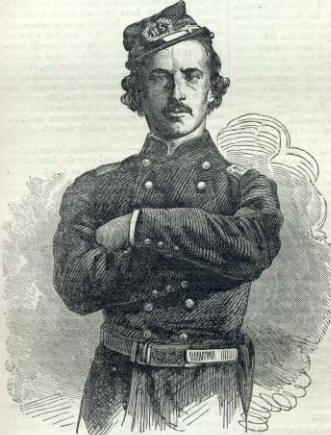 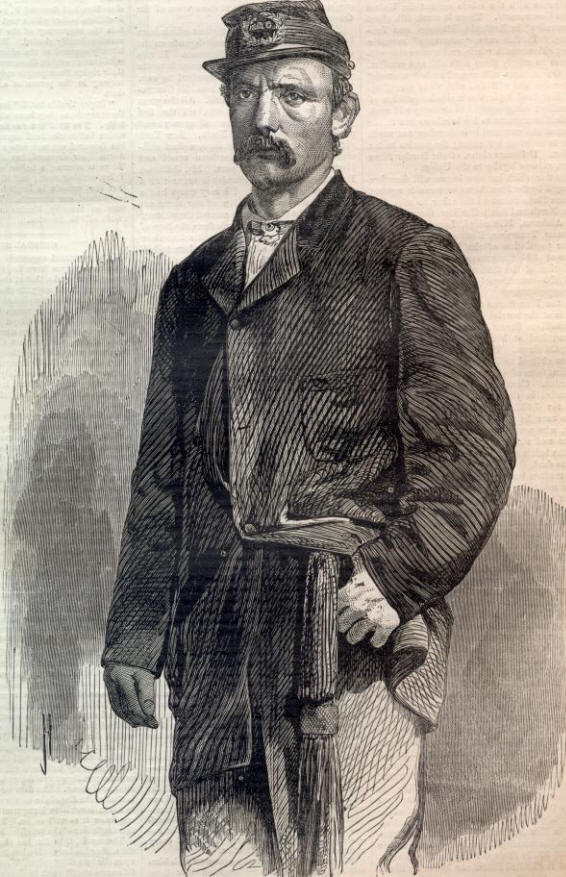 We acquired this leaf for the purpose of digitally preserving it for your research and enjoyment. If you would like to acquire the original 140+ year old Harper's Weekly leaf we used to create this page, it is available for a price of $170. Your purchase allows us to continue to archive more original material. For more information, contact paul@sonofthesouth.net |
|||||||||||||||||||||
|
|
||
|
|
Site Copyright 2003-2018 Son of the South. For Questions or comments about this collection, contact: paul@sonofthesouth.net |
|
|
Are you Scared and Confused? Read My Snake Story, a story of hope and encouragement, to help you face your fears. |
||
